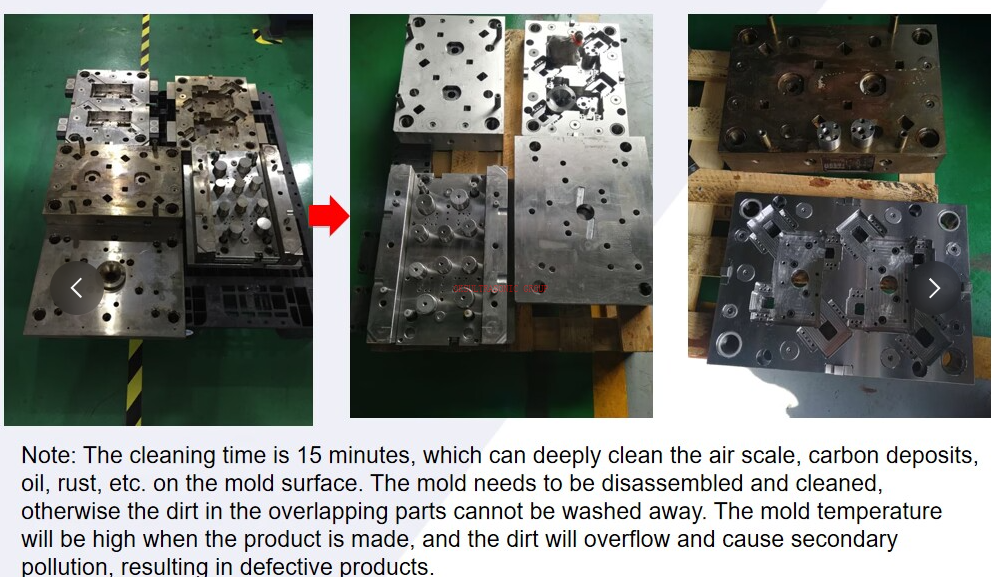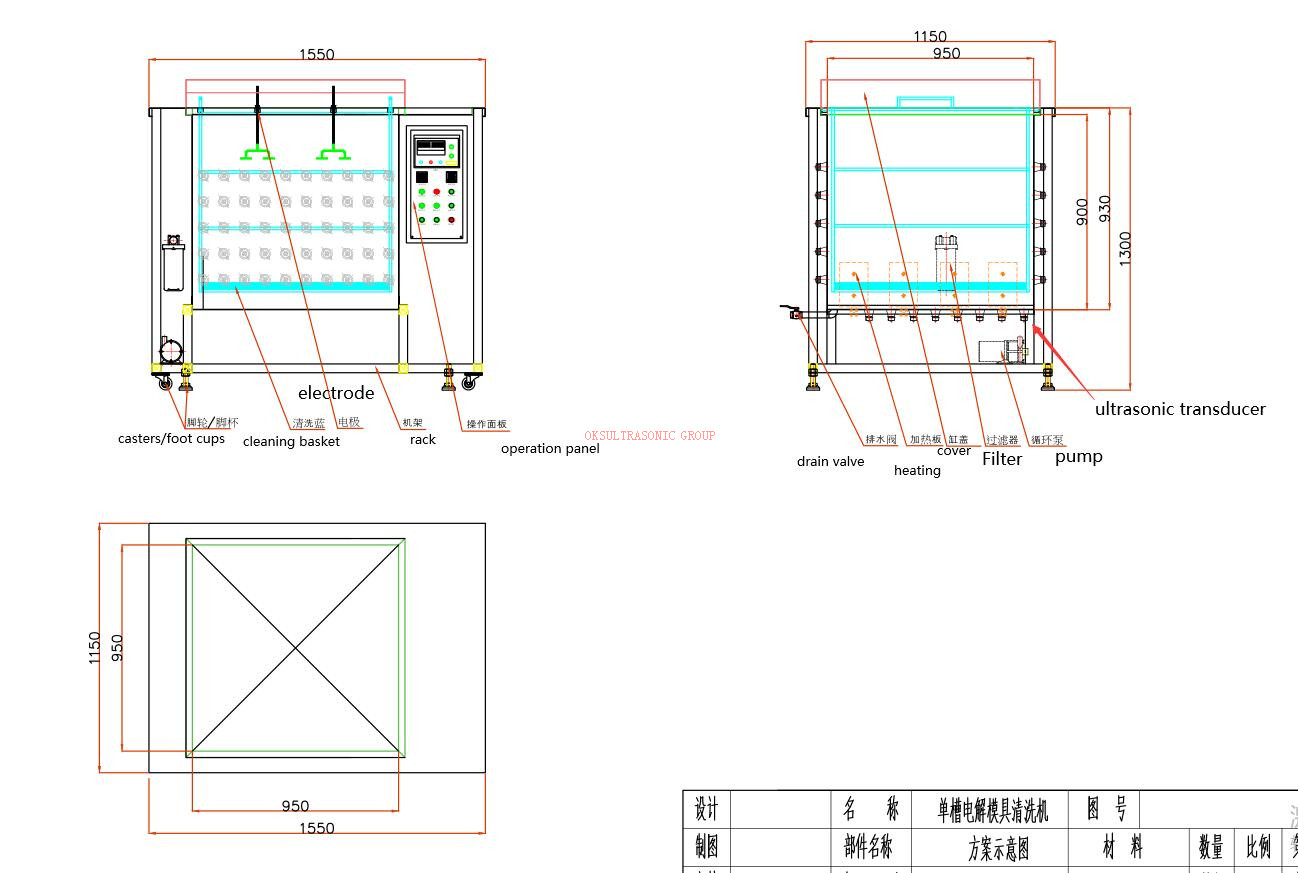Electrolysis mold function, the dirt is produced by the action of electric current to produce positive and negative molecules, through the catalytic action of oxygen and hydrogen generated on the metal surface, the dirt part is quickly decomposed, peeled off and surfaced; using the cavitation effect of ultrasound , Produces countless small bubbles and collides with the object. Impact blasting the dirt on the workpiece to automatically peel off the dirt.
Mold cleaning uses a special solution to quickly decompose the dirt through a sufficient chemical effect. Completely remove any dirt on the surface of the mold, even any mold with a complex shape can remove the dirt, and has a good anti-rust function, which greatly reduces the product defect rate after mold cleaning.
Use the mold or the workpiece to be cleaned as the cathode (just put it in the cleaning frame), and use the standard electrode rod as the anode. The use of electrolyzed water produces oxygen at the anode and hydrogen at the cathode. During the operation process, a large amount of hydrogen is generated on the surface of the workpiece, so that the dirt is quickly decomposed and peeled off from the surface of the workpiece; at the same time, the cavitation effect of ultrasonic waves is used to cause countless small bubbles to collide with the object. Impact blasting the dirt on the workpiece to automatically peel off the dirt.
At the same time, the special cleaning liquid 102C is used to make the dirt decompose rapidly through a sufficient chemical reaction. In this way, even the difficult-to-clean parts, such as the grooves, grooves, corners, holes, holes, bites and other complicated parts inside the mold, will be cleaned cleanly, and the mold will show a brilliant metallic luster from the inside to the outside.
Plastic molds, hardware molds, optical mirror molds, rubber molds, medical equipment, auto parts molds, etc.
1: Description of cleaning process of electrolytic ultrasonic (plastic mold) cleaning machine
2: Equipment use: used for cleaning precision plastic molds, hardware, modules, modules, mold cores, inserts, inserts, decontamination, high-temperature carbon deposits, sulfides, gas, degreasing, and rust removal.
3. The circulatory system is composed of a corrosion-resistant American little giant magnetic pump and a filter composed of self-circulation, so that the dirt that is washed off is quickly isolated by the filter cotton core, reducing liquid surface floats. At the same time, it can accelerate the electrolysis of the solution. Purify the solution and improve the utilization rate of the solution.
Type
Frequency (Khz)
Power(W)
Capacity(L)
OKS-MJQXJ-18LTT
40KHZ
1000W
18L
OKS-MJQXJ-20LTT
40KHZ
1200W
20L
OKS-MJQXJ-30LTT
40KHZ
1500W
30L
OKS-MJQXJ-40LTT
40KHZ
1700W
40L
OKS-MJQXJ-50LTT
40KHZ
2500W
50L
OKS-MJQXJ-60LTT
40KHZ
3000W
60L
OKS-MJQXJ-70LTT
40KHZ
3600W
70L
OKS-MJQXJ-80LTT
40KHZ
4000W
80L
OKS-MJQXJ-100LTT
40KHZ
5000W
100L
OKS-MJQXJ-115LTT
40KHZ
5200W
115L
OKS-MJQXJ-400LTT
40KHZ
6000W
400L
Using electrolysis, the object produces positive and negative molecules due to the action of electric current. Under the catalysis of oxygen and hydrogen generated on the metal surface, the dirty parts are quickly decomposed, peeled off and surfaced.
Utilizing the cavitation effect of ultrasonic waves, countless small bubbles are generated to collide with the object. Impact blasting the dirt on the workpiece to automatically peel off the dirt.
Using a special solution to make the dirt quickly decompose through a sufficient chemical effect.
The electrolytic ultrasonic system is composed of an ultrasonic generating system, an electrolytic circuit system, a circulating filter system, a control system, a special gold type cleaning fluid and a water-based rust inhibitor.
Ultrasonic cleaning is a process in which a 40KHZ high-frequency power supply is used to make the transducer convert mechanical energy from electrical energy. Tens of thousands of cavitation bubbles are constantly forming explosions, impacting the surface of the cleaned metal object, and quickly detaching the dirt on the metal surface.








